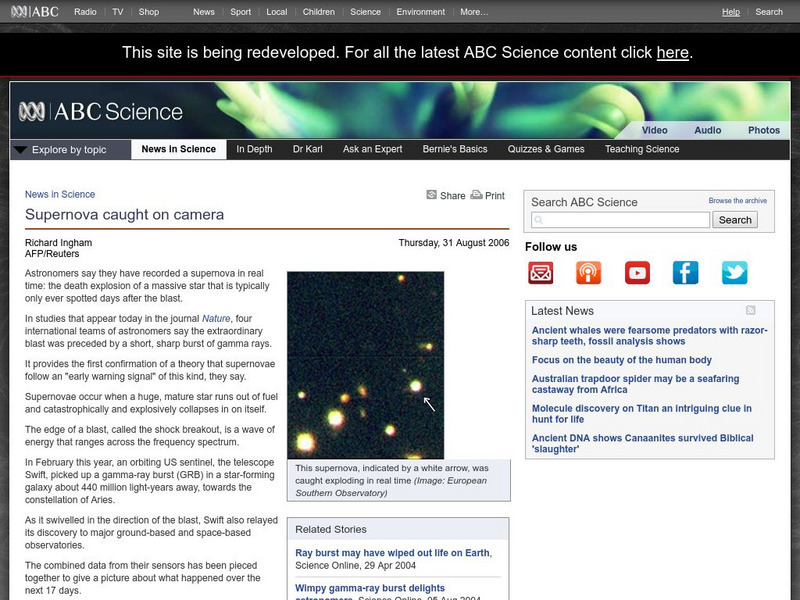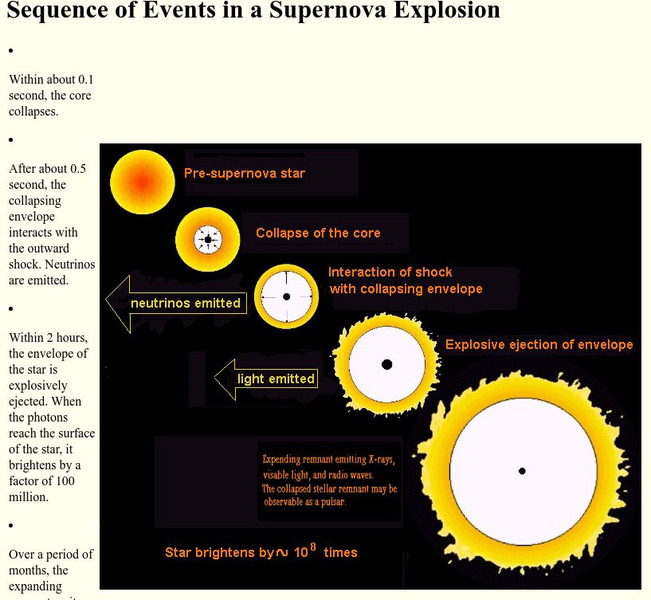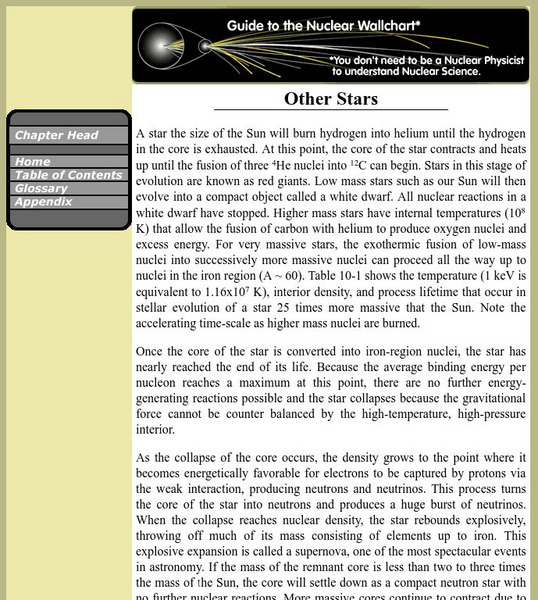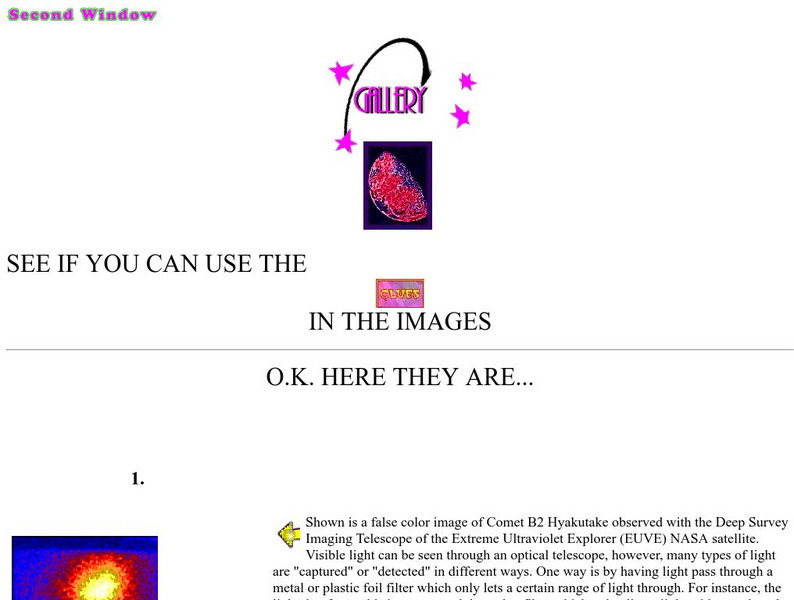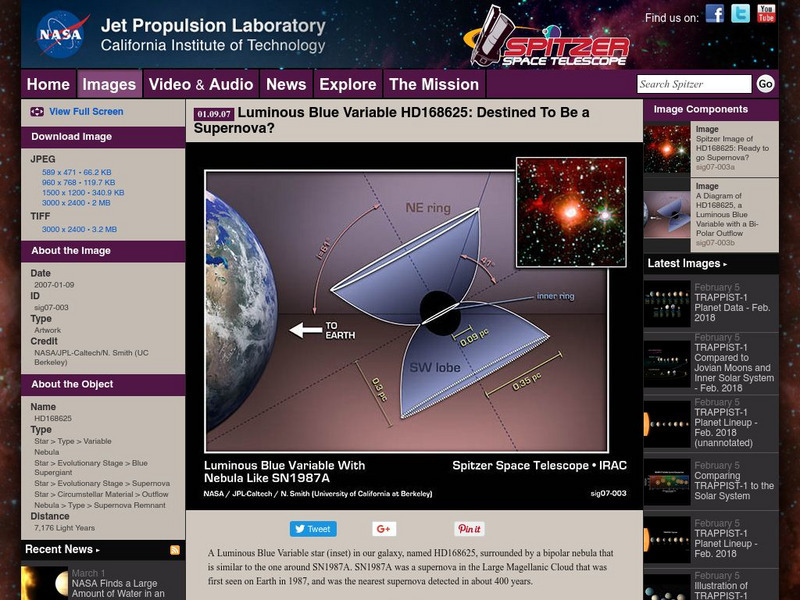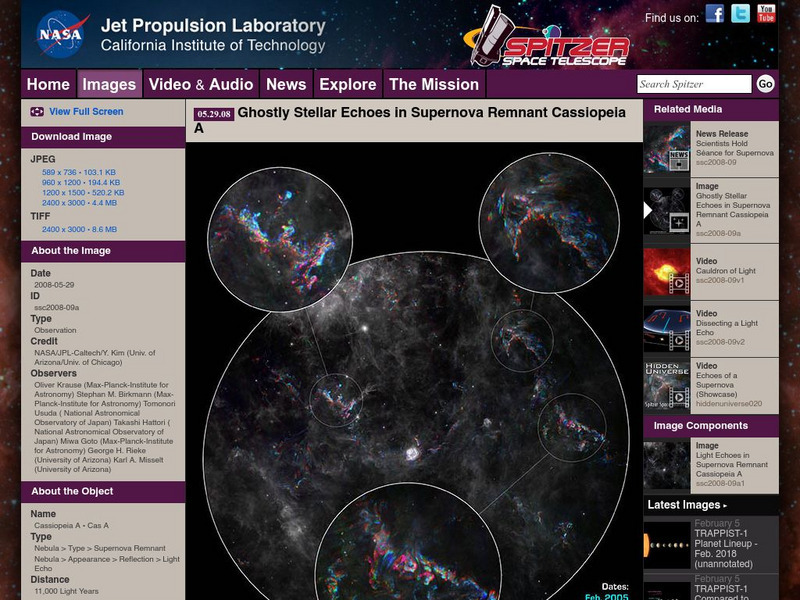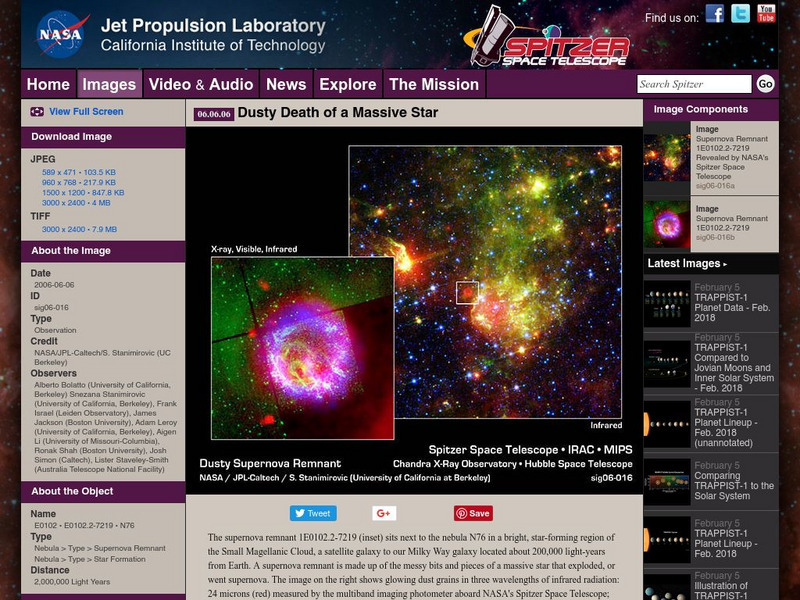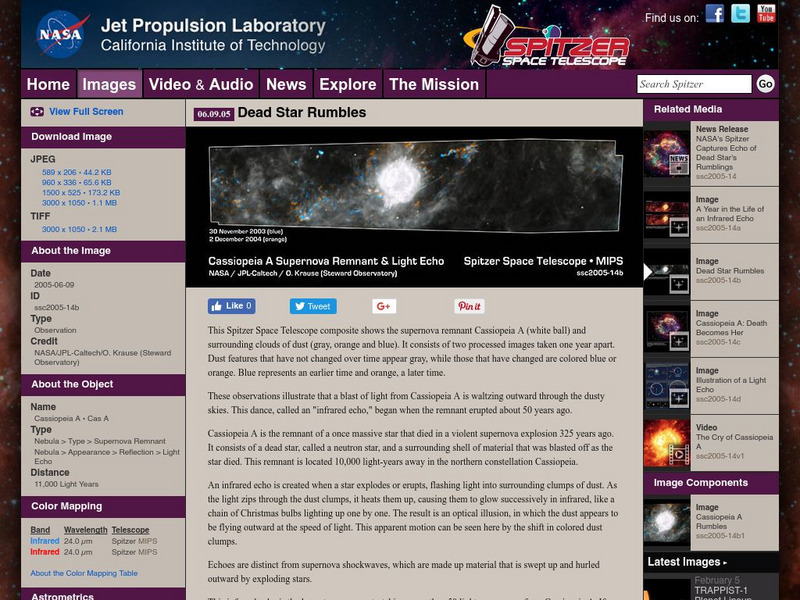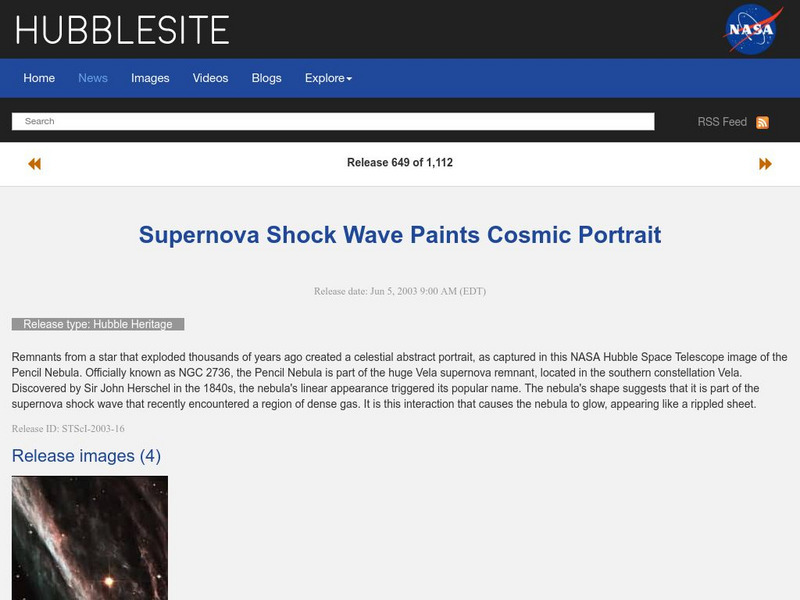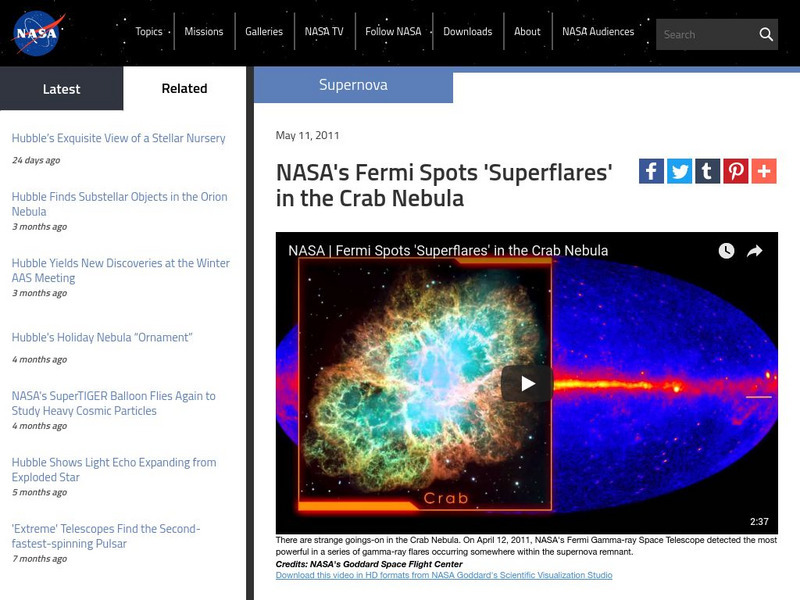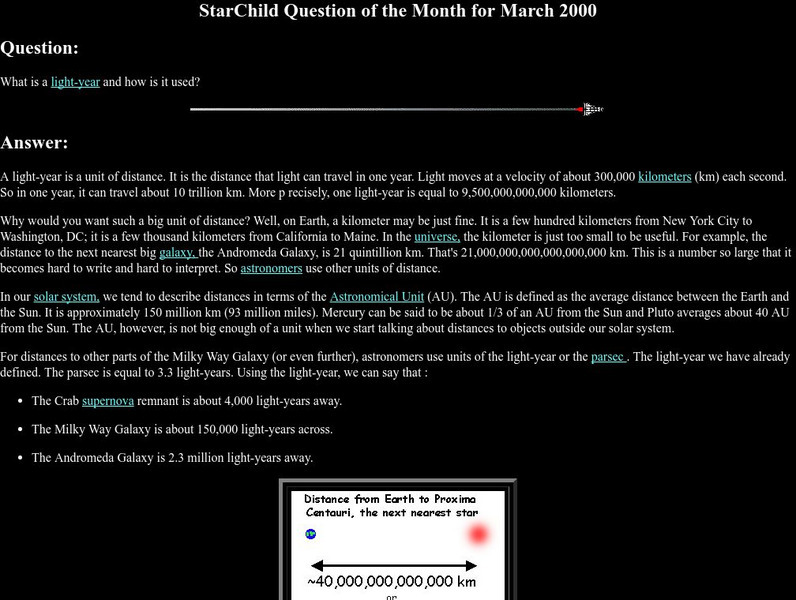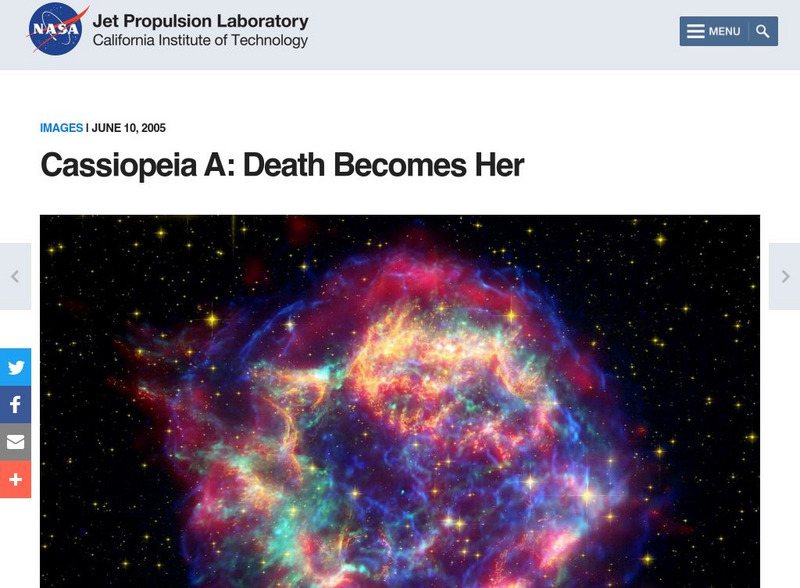Space Telescope Science Institute
Hubble Site: A Decade of Discovery
Take a look back at a decade of discovery concerning the Hubble from the HubbleSite. Site contains links to a portfolio of pictures, a quicktime video as well as the vault of discovery.
CK-12 Foundation
Ck 12: Earth Science: Life Cycle and Classification of Stars Study Guide
[Free Registration/Login may be required to access all resource tools.] This study guide summarizes key points about types of stars and he life cycle of a star. Includes a few questions to check for understanding.
National Science Foundation
National Science Foundation: 3 D Simulation of Exploding Supernovae
A 3-D representation of six exploding supernovae made by powerful supercomputers that allowed various multidimensional instabilities to be expressed.
NASA
Astronomical Society of the Pacific: Telescope Treasure Hunt
This hands-on astronomy activity lets learners hunt for different objects in the night sky that contribute to stellar and planetary formation, using a Treasure List. They will learn how stars and their planets form and will find objects...
NASA
Nasa Space Place: What Is a Nebula?
Learn about nebula and how stars form inside, and see some exciting images.
NASA
Nasa Space Place: What Is a Supernova?
Discover interesting facts about supernovas, what causes them, how bright they are, and how do scientists study them.
Australian Broadcasting Corporation
Australian Broadcasting Corporation: News in Science: Supernova Caught on Camera
From ABC News in Science, Richard Ingham's article explores information relating to footage of the explosion of a star. The article also deals with what happens in the aftermath of a supernova.
Cornell University
Cornell University: Astronomy: Sequence of Events in a Supernova Explosion
The complex sequence of events in a supernova explosion are explained and illustrated.
Lawrence Berkeley National Laboratory
Berkeley Lab: Other Stars
Describes other stars besides the sun in our galaxy and the major stages in the evolution of a massive star.
University of California
Center for Science Education: Gallery
A gallery of astronomy images which depict galaxies, comets, the moon, planets, nebulae, supernovae as seen in various regions of the electromagnetic spectrum. Each image in the gallery is described. Fascinating!
California Institute of Technology
Spitzer Science Center: Luminous Blue Variable
In examining the "Luminous Blue Variable" this site seeks to determine if the blue variable is "Destined To Be a Supernova." An image (or chart) is provided along with a brief description of the details of the picture.
California Institute of Technology
Spitzer Science Center: Massive Star's Death
Under the heading, "The (Almost) Invisible Aftermath of a Massive Star's Death" this site examines specific details of an image which demonstrates the death of a star that does not end in an impressive supernova but rather fades away.
California Institute of Technology
Spitzer Science Center: Kepler's Supernova Remnant
This image, titled "Kepler's Supernova Remnant: Views from Chandra, Hubble and Spitzer" features six individual pictures of Kepler's supernova taken with different types of equipment (x-rays, infrared, etc). The text under the image...
California Institute of Technology
Spitzer Science Center: Image of an Infrared Echo
The Infrared Echo, featured this space telescope image of the supernova remnant of Cassiopeia A, is created when a star explodes. A detailed textual overview explains various specifics of the picture.
California Institute of Technology
Spitzer Science Center: Dusty Death of a Massive Star
Under the heading, "Dusty Death of a Massive Star" this site examines specific details of an image displaying bits and pieces of a star after a supernova. The image is enhanced and enlarged in a second picture.
California Institute of Technology
Spitzer Science Center: Dead Star Rumbles
This image, titled "Dead Star Rumbles" features a medium-sized image of the remnants of Cassiopeia A and its surrounding infrared echo. The text under the image details various specifics about the picture.
Space Telescope Science Institute
Hubble Site: Supernova Shock Wave
This site from the Hubblesite highlights an article written about a supernova shock wave. Provides images as well as video footage. Site offers links to fast facts, a question and answer section as well as related links.
NASA
Nasa: Crab Nebula Supernova Remnant
The Crab Nebula Supernova Remnant image is part of a series of photographs taken from the Spitzer Space Telescope. The picture is accompanied by a textual overview of a nebula left over from a supernova explosion. Specific attention is...
NASA
Nasa Star Child: What Is a Light Year and How Is It Used?
This is a definition and example of how distance is measured in astronomy, such as the distance between our earth and the stars.
NASA
Nasa: Cassiopeia A
This image, titled "Cassiopeia A: Death Becomes Her" features the supernova remnants of Cassiopeia A. The text under the image details various specifics about the picture.
Curated OER
Science Kids: Science Images: Supernova
A photo of a distant supernova taken by the Hubble Space Telescope.



